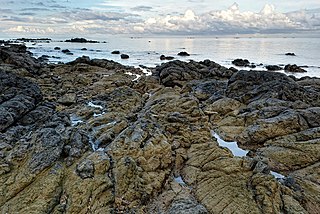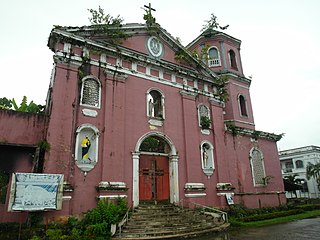
Malinao, officially the Municipality of Malinao, is a 4th-class municipality in the province of Aklan, Philippines. According to the 2020 census, it has a population of 24,517 people.

Buenavista, officially the Municipality of Buenavista, is a 2nd class municipality and the largest settlement in the province of Guimaras, Philippines. According to the 2020 census, it has a population of 52,899 people.

Balete, officially the Municipality of Balete, is a 4th class municipality in the province of Aklan, Philippines. According to the 2020 census, it has a population of 30,090 people.

Buruanga, officially the Municipality of Buruanga, is a 5th class municipality in the province of Aklan, Philippines. It is the farthest town of Aklan from its provincial capital. According to the 2020 census, it has a population of 19,357 people.

Madalag, officially the Municipality of Madalag, is a 4th class municipality in the province of Aklan, Philippines. It is Aklan's largest municipality by land area and also the most sparsely populated. According to the 2020 census, it has a population of 18,890 people.

Makato, officially the Municipality of Makato, is a 4th class municipality in the province of Aklan, Philippines. According to the 2020 census, it has a population of 29,717 people.

Nabas, officially the Municipality of Nabas, is a 4th class municipality in the province of Aklan, Philippines. Nabas serves as the arrival gateway of Boracay Airport. According to the 2020 census, it has a population of 40,632 people, making it the fifth most populous town in Aklan Province..

New Washington, officially the Municipality of New Washington, is a 3rd class municipality in the province of Aklan, Philippines. According to the 2020 census, it has a population of 47,955 people.

Tangalan, officially the Municipality of Tangalan, is a 5th class municipality in the province of Aklan, Philippines. According to the 2020 census, it has a population of 23,704 people.

Enrique B. Magalona, officially the Municipality of Enrique B. Magalona, also known simply as E. B. Magalona and formerly known and still commonly referred to as Saravia, is a 2nd class municipality in the province of Negros Occidental, Philippines. According to the 2020 census, it has a population of 64,290 people.

Nueva Valencia, officially the Municipality of Nueva Valencia, is a 3rd class municipality in the province of Guimaras, Philippines. According to the 2020 census, it has a population of 42,771 people.

Culasi, officially the Municipality of Culasi, is a 3rd class municipality in the province of Antique, Philippines. According to the 2020 census, it has a population of 44,494 people. Making it fourth most populous municipality in the province of Antique and third largest municipality in terms of land area, with a total area of 228.56 square kilometers.

Sebaste, officially the Municipality of Sebaste, is a 4th class municipality in the province of Antique, Philippines. According to the 2020 census, it has a population of 18,816 people. Making it 16th most populous municipality in the province of Antique.

Dumarao, officially the Municipality of Dumarao, is a 2nd class municipality in the province of Capiz, Philippines. According to the 2020 census, it has a population of 49,506 people.

Jamindan, officially the Municipality of Jamindan, is a 2nd class municipality in the province of Capiz, Philippines. According to the 2020 census, it has a population of 38,670 people.

Pontevedra, officially the Municipality of Pontevedra, is a 3rd class municipality in the province of Capiz, Philippines. According to the 2020 census, it has a population of 49,725 people.

Sapian, officially the Municipality of Sapian, and sometimes spelled Sapi-an, is a 4th class municipality in the province of Capiz, Philippines. According to the 2020 census, it has a population of 26,697 people, making it the least populated municipality in the province. It is 27 kilometres (17 mi) from Roxas City, the provincial capital.

Sigma, officially the Municipality of Sigma, is a 4th class municipality in the province of Capiz, Philippines. According to the 2020 census, it has a population of 31,688 people.

Badiangan, officially the Municipality of Badiangan, is a 4th class municipality in the province of Iloilo, Philippines. According to the 2020 census, it has a population of 27,056 people.

Leon, officially the Municipality of Leon, is a 2nd class municipality in the province of Iloilo, Philippines. According to the 2020 census, it has a population of 51,990 people.

























